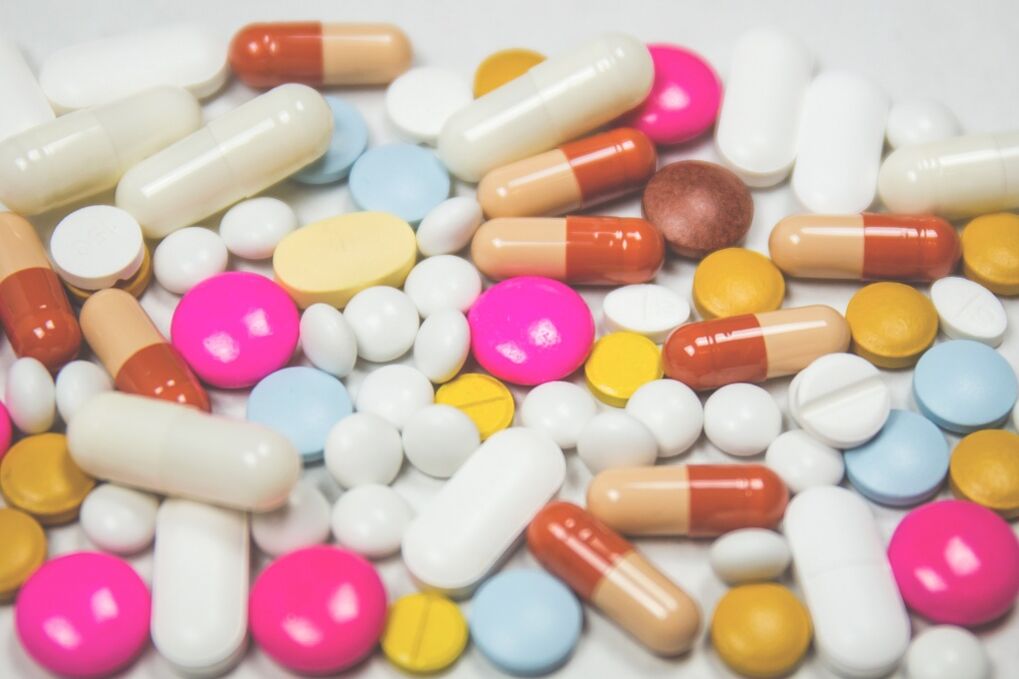What is prostatitis?This is the most common urological disease in men against the background of inflammation of the prostate gland, caused by pathogenic (certainly causing the disease) and conditionally pathogenic infection.

In most cases, in young and sexually active men, it is a complication of mildly symptomatic or asymptomatic STIs.The cause of the development of prostatitis can be: Trichomonas, gonococci (causing gonorrhea), chlamydia, ureaplasma, mycoplasma.Among organisms not related to STIs, E. coli, fecal enterococci, etc.are of great importance.
According to the modern classification, there are:
- Acute prostatitis.
- Chronic bacterial prostatitis.
- Chronic prostatitis (chronic pelvic pain syndrome) with signs of inflammation.
- Chronic prostatitis (chronic pelvic pain syndrome) without signs of inflammation.
- Asymptomatic prostatitis (asymptomatic) chronic prostatitis.
Currently, in most cases, we have to deal with the latter category of prostatitis in men, since in recent years trichomoniasis, chlamydia, ureaplasmosis and mycoplasmosis have acquired a leading role in the structure of STIs, which initially, in the vast majority of cases, have no manifestations, that is, do not bother a person in any way.And only after a long time do they manifest themselves with a complication - prostatitis.
It must be said that asymptomatic prostatitis is detected in the majority of patients who come simply for an examination for an STI, in sexual partners of women with STIs, as well as in infertile patients.
Causes of prostatitis
Typically, prostatitis is diagnosed when:
- decreased physical activity (sedentary lifestyle);
- dysrhythmias of sexual life (prolonged sexual abstinence, often replaced by a hyperactive sexual life);
- alcohol abuse;
- chronic constipation;
- as a result of infection with an STI - urethrogenic prostatitis, that is, occurring when infections enter the prostate through the urethra;
- due to the penetration of pathogens from foci of chronic infection (chronic tonsillitis, sinusitis, kidney disease, etc.);
- for diseases of the rectum (hemorrhoids, anal fissure, paraproctitis) - endogenous prostatitis.This explains the detection of E.coli in most cases of chronic prostatitis.

Symptoms of prostatitis in men
It begins with a rise in temperature to 39-40°C with fever and chills, difficulty urinating, pain and burning during urination;in severe cases, due to swelling of the glandular tissue, acute urinary retention occurs - a condition that requires surgical intervention.
This takes place without demonstrations.It is detected mainly in patients wishing to be examined for an STI after casual sexual intercourse.It is also detected in patients who come for examination as sexual partners of women with STIs or in patients with sperm pathology.
Manifest :
- Discomfort and pain in the lower abdomen, perineum, patients sometimes note that the pain radiates to the head of the penis or to the urethra.
- Urinary problems.Frequent and painful urination, feeling of incomplete urination (often with hypothermia), urination one or several times at night, difficulty urinating and weakening of the urinary stream.
- Sexual function disorder.Pain and discomfort during ejaculation, pain in the urethra and rectum, weakening or loss of the sensation of orgasm, etc.
- Changes in the fertilizing capacity of sperm.
- This results in increased anxiety and nervousness in the patient, caused by hyper-fixation of attention on their condition.
Complications of prostatitis
In the absence or absence of inadequate treatment of prostatitis, the following complications may occur:
- Transition from acute to chronic prostatitis.
- Acute urinary retention (the patient cannot urinate for a long time) may require surgery.
- Development of male infertility.
- Formation of scars and adhesions in the urethra with subsequent stricture.
- Development of inflammation of the bladder (cystitis).
- Inflammatory kidney diseases (pyelonephritis, etc.).
- The occurrence of purulent inflammation of the prostate in men (prostate abscess), requiring surgical intervention.
- Sepsis (penetration of infection into the bloodstream with subsequent damage to organs and systems of the whole body) is a formidable and potentially fatal complication.It develops more often in patients with decreased immune function, in patients with diabetes mellitus, in patients with chronic renal failure, in patients with AIDS, etc.
Diagnosis of prostatitis
The diagnosis of prostatitis is carried out in patients with characteristic complaints, as well as in patients with identified STIs and identified infertility.
The diagnosis includes:
- Digital examination of the prostate (through the rectum) with collection and examination of prostatic secretions (juice), when the presence of inflammation in the gland is detected.
- Urine examinations: general analysis, 2 or 4 glasses of urine, bacteriological examination (detection of prostatitis pathogens), cytological examination (detection of cancer).
- Flowmetry: evaluation of the characteristics of the urinary stream, its quantity, its flow rate, the duration of urination.
- Ultrasound examinations to detect residual urine, organic lesions of the prostate, formal signs of prostatitis.
Sometimes, in order to diagnose prostatitis and exclude cancer, the following are also prescribed:
- Sperm studies.
- Prostate biopsy.
- PSA blood test (to detect cancer).
- Computed tomography of the pelvic organs.
- Nuclear magnetic resonance examination of pelvic organs, etc.

Treatment of prostatitis
Treating bacterial prostatitis caused by an STI is not an easy task.Adequate and timely treatment leads to complete cure of this category of prostatitis after complete elimination (disappearance) of STI pathogens in most patients.It must be said that complete recovery from prostatitis caused by a common infection (and not an STI) only occurs in 30% of cases, despite advances in modern medicine.In these cases, the goal is to achieve stable remission of the disease.
Modern treatment of prostatitis includes:
- Antibacterial treatment for at least 2 weeks, sometimes up to 1-2 months or more.
- Treatment of pain syndrome (anti-inflammatories in the form of suppositories, injections, tablets).
- Treatment of urinary disorders (α-1-blockers, 5-α-reductase blockers).
- Physiotherapeutic treatment methods (magnetotherapy, laser therapy, etc.).
- Prostate massage.
Patients are also recommended to make lifestyle changes, namely:
- regular sex life without sexual excesses;
- give up alcohol and a sedentary lifestyle;
- mandatory use of barrier contraception;
- treatment of diseases of the digestive tract causing stool retention, etc.























